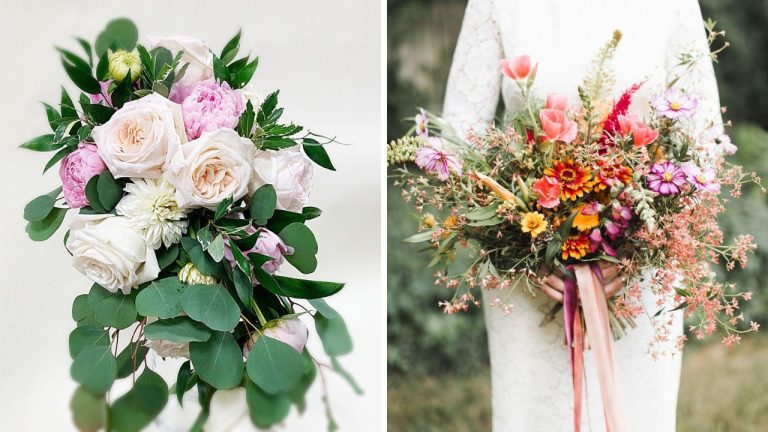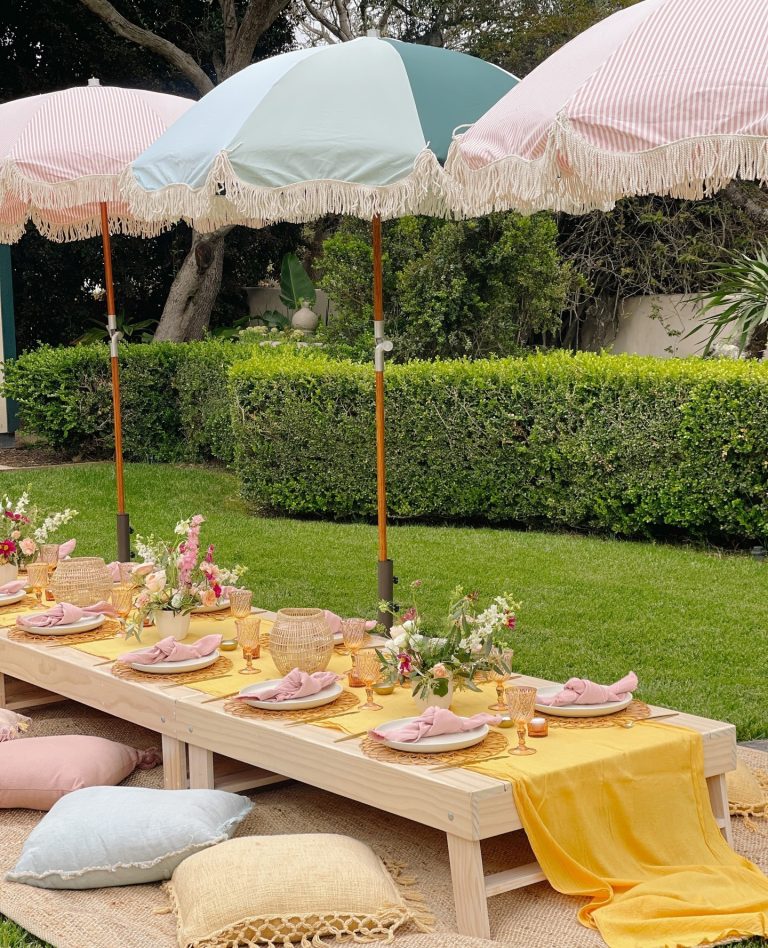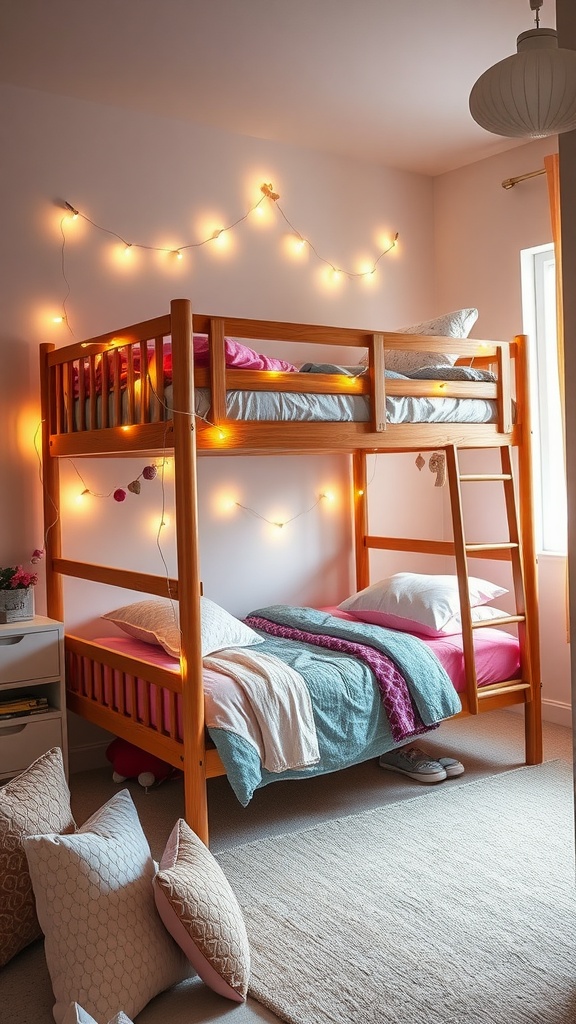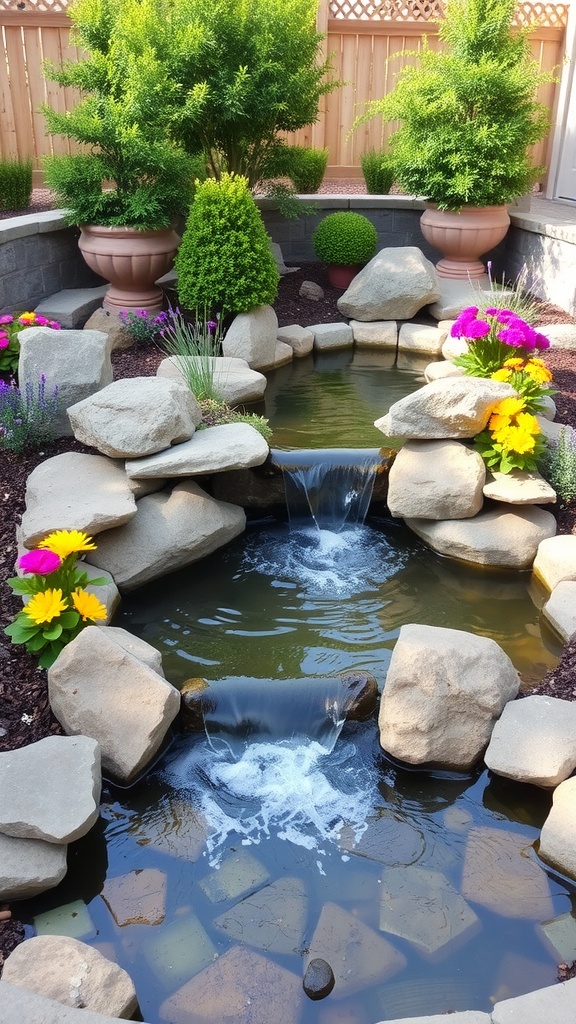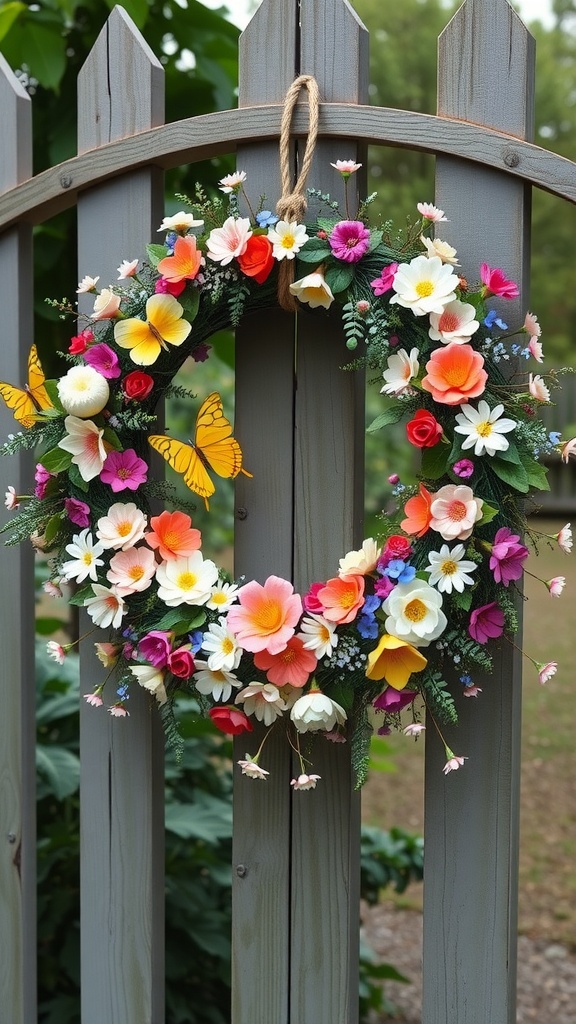17+ Raised Garden Beds Layout Ideas to Inspire Your Outdoor Oasis
Whether you’re dreaming of a backyard transformation or simply looking to upgrade your outdoor living space, raised garden beds are the perfect way to bring beauty and functionality to your yard. They not only make gardening more accessible but also offer endless layout possibilities to match your unique style.
From charming backyard corners to full-blown modern back porch ideas, these 18 raised garden bed layout ideas will help you design the outdoor retreat you’ve always wanted.
Let’s dig in!
1. Classic Grid Layout
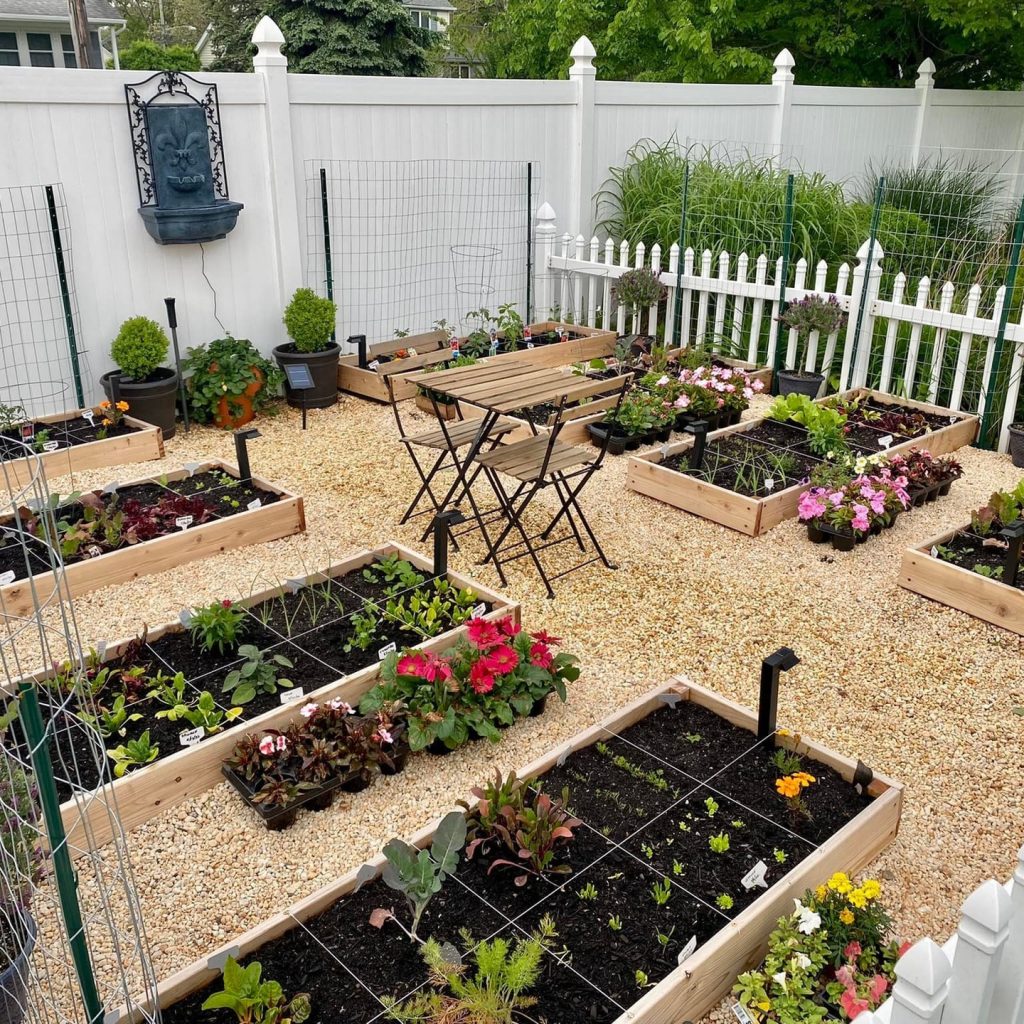
The classic grid layout is one of the most straightforward and timeless raised garden bed configurations—and for good reason. It’s structured, symmetrical, and easy to maintain, especially for beginners who want to keep things organized from the start.
Imagine your backyard segmented into equal-sized raised beds, all perfectly aligned in rows and columns like a checkerboard of greenery. This layout allows for clear plant separation, which is ideal for companion planting or rotating crops. It also makes watering and maintenance simple, as everything is laid out logically with walking paths in between.
This layout shines when paired with clean, modern patio furniture and thoughtful back porch decor—especially if you’re working with a contemporary outdoor space.
For added flair, consider using pavers or gravel for pathways, which not only adds visual interest but also keeps things tidy and mud-free. Whether you’re growing herbs, veggies, or flowers, this layout brings structure and style to your garden without overwhelming the space.
If you’re new to gardening or just love order, the classic grid is a low-stress, high-impact way to elevate your backyard.
2. U-Shaped Layout
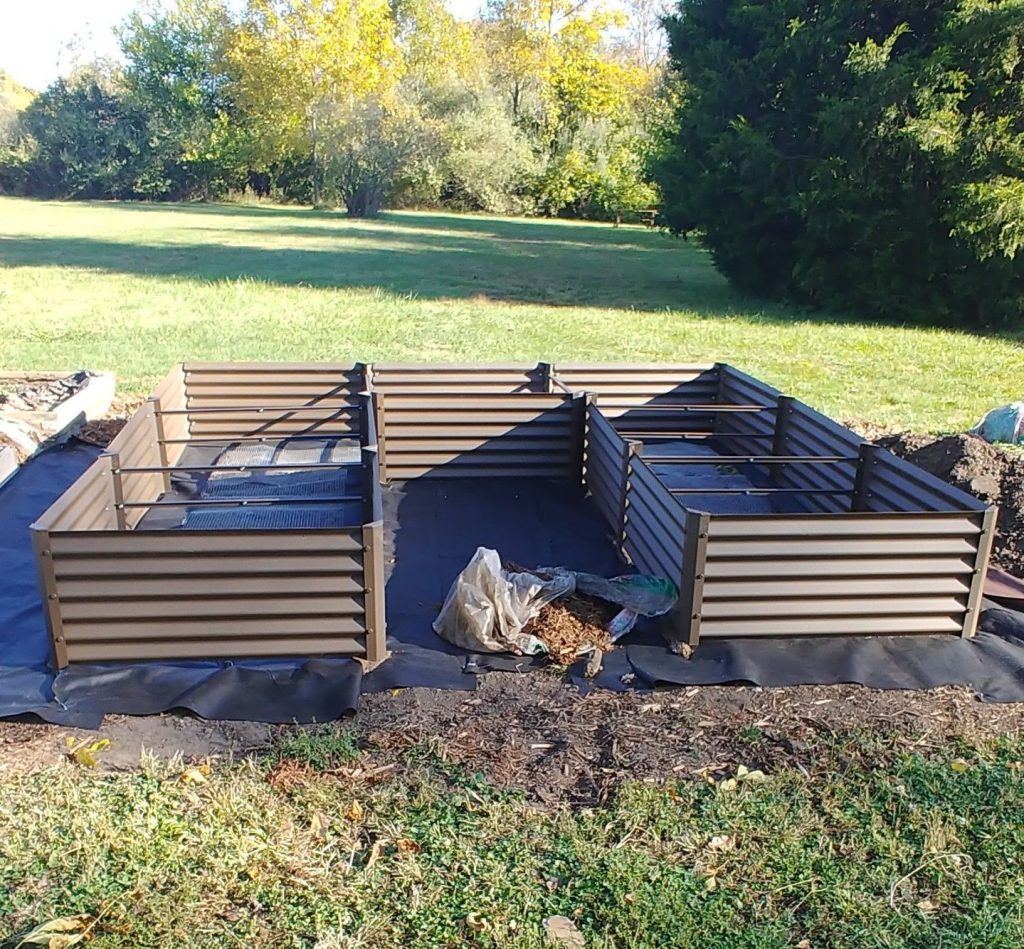
The U-shaped raised garden bed layout is as functional as it is visually appealing, making it perfect for those who want both accessibility and a stylish design. This layout wraps around the gardener, forming a U-shape that puts all your plants within arm’s reach.
This style is especially helpful if you’re aiming for an ergonomic setup—ideal for those with mobility concerns or anyone who doesn’t want to bend too much while gardening. It allows for a centralized standing or sitting area, where you can tend to all sections without having to walk around excessively.
U-shaped layouts are a beautiful fit alongside modern back porches or as a stand-alone feature in the middle of your yard. You can even line the interior edge of the U with modern patio furniture, creating a serene place to sip your morning coffee while surrounded by greenery.
Design tip: Use contrasting wood or composite materials to give your beds a sleek, architectural look. The shape itself lends a sense of intentionality to your space, making it feel curated and cozy at once.
Whether you’re planting a kitchen garden or a colorful flower arrangement, the U-shape delivers big on convenience and charm.
3. L-Shaped Corner Layout
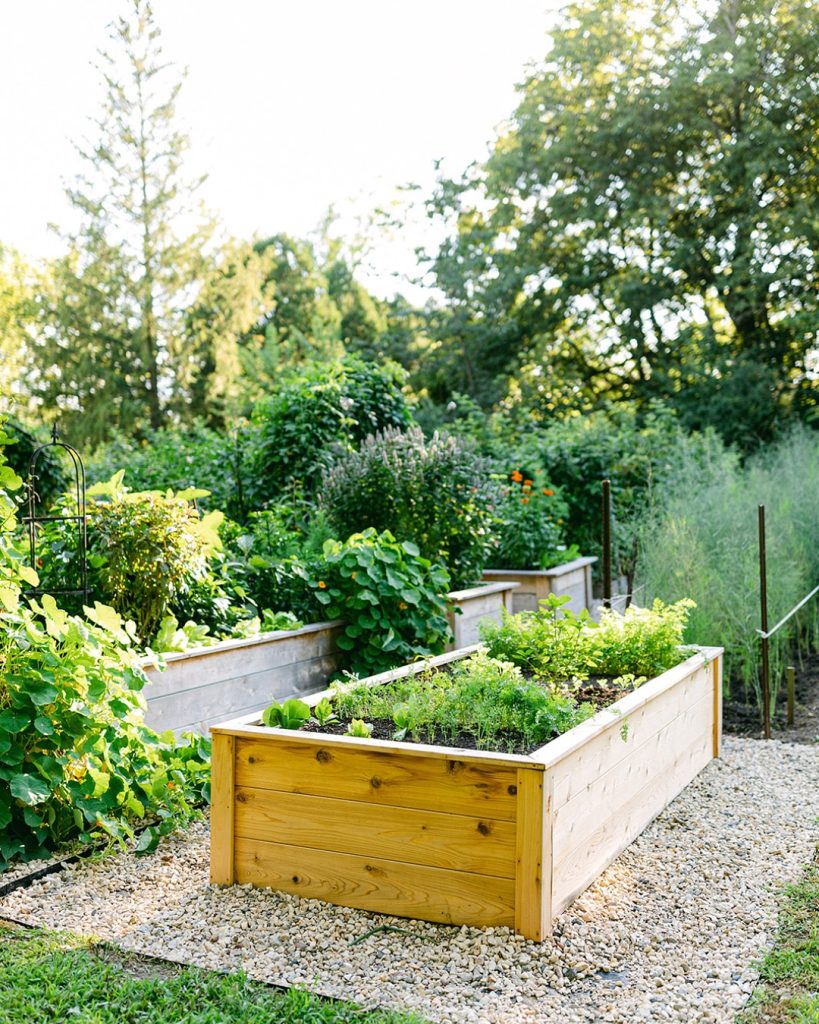
If you’re working with a smaller yard or looking to optimize a neglected corner, the L-shaped raised garden bed layout might be your perfect match. It’s one of the smartest ways to use limited space without sacrificing growing potential.
This layout fits snugly into any 90-degree corner, which often goes underutilized in backyard designs. Whether it’s the edge of a patio or the far corner of your fence line, the L-shape turns an awkward angle into a lush, productive oasis.
Not only does it save space, but it also creates a natural sense of enclosure, giving your garden a cozy, tucked-away feeling. This makes it a great option if you’re going for a more intimate back porch decor style, or if you’re pairing it with outdoor seating.
Add a vertical trellis on one side for climbing plants like beans or cucumbers, and you’ve instantly expanded your garden without taking up more ground area.
This layout is perfect for those who want a space-efficient solution that still feels abundant. It’s functional, beautiful, and a clever way to bring life to overlooked spaces.
4. Circular Raised Bed Layout

Circular raised bed layouts are as stunning as they are strategic. With their soft, rounded shapes and harmonious symmetry, they instantly elevate the visual appeal of your garden while keeping your plants happily organized.
At the heart of this design is a central point—often used as a focal feature such as a decorative birdbath, sculpture, or even a tall flowering plant. The surrounding beds radiate outward in circular layers or segments, giving your space a well-balanced, serene vibe.
This layout works wonders in wide-open backyards and pairs beautifully with more organic, rustic patio decor. That said, it can just as easily be integrated into a modern outdoor living space by using stone, steel, or minimalist wooden edging.
What makes the circular layout so efficient is its excellent airflow and sunlight distribution. The curved edges also make harvesting and planting easier since there are no hard corners to navigate.
If you’re drawn to garden designs that are both artistic and practical, this layout offers the best of both worlds. It transforms your green space into a living sculpture.
5. Keyhole Garden Layout
Source
Originating in Africa as a water-saving technique, the keyhole garden layout is now a go-to favorite for eco-conscious gardeners looking to reduce waste and improve sustainability. It gets its name from its distinctive shape—imagine a circle with a small “keyhole” pathway leading to the center.
In the middle of the bed sits a compost basket or bin where you can toss in organic kitchen scraps and garden clippings. As the compost breaks down, it nourishes the surrounding soil, making the entire system self-sustaining.
This layout is an excellent fit for hot, dry climates or areas where water conservation is a concern. It’s also perfect if you’re integrating permaculture principles into your garden design.
Aside from its eco-friendly benefits, the keyhole layout has major aesthetic charm. It creates a natural focal point in your yard and invites curiosity. Add a bench nearby or some warm lighting, and you’ve got a garden that’s as much about experience as it is about harvest.
Whether paired with rustic wood, stone edging, or even recycled materials, the keyhole garden is a beautiful example of functional, conscious outdoor living.
6. Tiered Raised Bed Layout
Source
Tiered raised garden beds are all about adding vertical interest and making the most of your growing space. These layered beds step up in height—usually from front to back—creating a cascading effect that’s both eye-catching and highly efficient.
This layout is fantastic for sloped yards or small areas where you want to maximize your planting real estate without going wide. Each tier can be dedicated to different plant types based on their sun and water needs. For instance, place herbs and leafy greens at the bottom, where it’s easy to harvest, and root vegetables or taller plants higher up.
Tiered beds also make beautiful backdrops for outdoor living spaces. Think of them as natural green walls that provide visual texture and seasonal color to your yard. You can even match the wood tone of the beds with your modern patio furniture to create a cohesive design flow.
They’re especially popular among gardeners who want a more curated, layered look that mimics landscaped flower beds. Plus, the varying heights can help with drainage and reduce the risk of root rot.
If you love the idea of a garden that looks as good as it performs, the tiered layout delivers on both fronts.
7. Raised Bed Border Layout
Source
Looking to blend form and function in your yard? The raised bed border layout is an elegant way to frame your space while putting your green thumb to work. This design uses raised beds as natural borders—along fences, patios, walkways, or even your home’s foundation.
It’s a clever trick for defining space while softening hard lines in your landscape. The long, linear beds can be planted with colorful blooms, fragrant herbs, or even compact vegetables, bringing life and movement to your garden edges.
This layout is perfect for smaller yards or urban homes where ground space is limited. By building along existing structures, you free up the central lawn or patio area for entertaining, relaxing, or displaying modern back porch decor.
Plus, when paired with solar lights or low garden fencing, these border beds create an ambient, designer-like effect—ideal for outdoor gatherings.
Want to take it up a notch? Add trailing plants like strawberries or creeping thyme to spill over the edges for a soft, romantic look.
Raised bed borders prove that you don’t need a huge footprint to create a showstopping garden.
8. Zigzag Layout
Source
For gardeners with a playful spirit and a love for bold design, the zigzag layout offers a fun and functional twist. Instead of placing your raised beds in straight lines, this layout arranges them in a staggered zigzag pattern that adds dynamic movement to your yard.
This layout works exceptionally well in narrow or awkwardly shaped spaces where traditional rows might feel too rigid. It draws the eye along a more natural, meandering path—turning your garden into an adventure, not just a destination.
From an aesthetic standpoint, zigzag beds can break up visual monotony and create a layered look that’s modern and artistic. Add solar lanterns, garden statues, or curved stepping stones to accentuate the angles and create a whimsical walkway between your beds.
Functionally, the zigzag design offers good air circulation between plants, and it makes your garden feel more spacious by creating more surface area for planting.
This is a great choice for those wanting a raised garden that feels both unexpected and delightful—especially when paired with colorful blooms and bold outdoor decor.
9. Side-by-Side Symmetry
Source
Symmetry lovers, this one’s for you. The side-by-side layout is all about balance—think of it like the mirror image of your favorite garden bed design. Two or more raised beds are placed parallel to each other, creating a sleek, even design that appeals to both the eye and the gardener.
It’s a favorite for more modern outdoor living spaces because of its clean, architectural feel. Pair it with black metal planters or polished wood, and you’ve got a layout that feels chic and intentional. Bonus points if your beds align with a central pathway or focal point like a water feature or patio seating area.
This layout makes crop planning easier too. You can divide beds by plant type, rotate seasonally, and easily access all sides with ample walking room in between.
When flanked with string lights or low fencing, this setup transforms your garden into a dreamy backyard escape. It offers the kind of symmetry that feels soothing and luxurious, like stepping into a thoughtfully designed courtyard.
Simple, sophisticated, and satisfying—what’s not to love?
10. Narrow Path Maze Layout
Source
The narrow path maze layout is for the dreamers and wanderers. It transforms your garden into a secret hideaway, with raised beds arranged in a playful maze-like formation that encourages exploration and a deeper connection to your space.
This layout works best in medium-to-large backyards where you can create winding paths using gravel, stepping stones, or mulch. The beds are placed with just enough spacing between them for narrow walkways, giving the space a cozy, tucked-away feel. It’s ideal for those who love back porch decor that spills into a lush, immersive garden.
Beyond its whimsical vibe, this layout is also very practical. The close proximity of beds makes watering and tending your plants easier and more efficient. You can also plant taller crops like sunflowers or tomatoes along the outer edges to create natural “walls,” adding to the magical, garden-within-a-garden feeling.
Accent the area with fairy lights, trellises, or small statues to enhance the enchanted effect. Whether you’re harvesting fresh greens or just enjoying a morning stroll, the narrow path maze layout turns every gardening session into a mini retreat.
11. Modular Bed Layout
Source
Flexibility is the name of the game with the modular raised bed layout. If you’re the kind of gardener who loves to rearrange, test new designs, or add on as you grow—this one’s for you.
Modular layouts are made up of smaller, uniform garden beds that can be arranged in various formations: rows, squares, zigzags, or even circles. You can start with a few beds and expand as needed without disrupting the entire design. It’s the gardening version of “choose your own adventure.”
This layout style works especially well for renters or anyone with a temporary space, since many modular beds can be relocated easily. You can also use different modules for different themes: one for herbs, one for pollinator flowers, one for veggies.
When paired with sleek, stackable modern patio furniture or multi-use outdoor living accessories, this layout creates a garden that’s as adaptable as your lifestyle.
To enhance the aesthetic, try mixing materials—wooden beds for veggies, galvanized steel for herbs, or even concrete blocks for succulents. The possibilities are endless, and that’s the beauty of it.
12. Patio-Paired Layout
Source
Blending raised beds into your patio area is one of the chicest ways to merge gardening with modern outdoor living. The patio-paired layout incorporates planters and beds directly into or alongside your patio space, turning your favorite hangout zone into a thriving green retreat.
This layout style is incredibly functional. You can grow fresh herbs right next to your outdoor kitchen, plant aromatic flowers for ambiance, or even tuck small fruiting plants near your seating area. It’s the perfect way to elevate your modern back porch ideas into a full sensory experience.
Visually, this layout allows for a seamless indoor-outdoor flow. Use matching materials between your garden beds and patio furniture for a polished, cohesive look. Raised beds can double as natural barriers, defining lounging or dining spaces while adding a lush backdrop.
Consider using built-in bench planters or corner beds to frame your patio. Add throw pillows, string lights, and back porch decor to complete the vibe. You’ll love how easy it is to harvest herbs for dinner or relax surrounded by blooms after a long day.
This layout proves that gardening doesn’t have to be separate from your lifestyle—it can be right in the middle of it.
13. Urban Balcony Layout
Source
Don’t have a backyard? No problem. The urban balcony layout proves that even the smallest outdoor spaces can be transformed into thriving, beautiful gardens. Whether you’re in an apartment, condo, or townhouse, this layout lets you garden vertically, smartly, and stylishly.
Raised beds for balconies often come in the form of tiered planters, narrow troughs, or mobile planter carts. These options maximize limited space while still giving your plants the soil depth they need to thrive. Lightweight materials like cedar, recycled plastic, or galvanized metal are ideal for balcony use.
This layout pairs perfectly with modern patio furniture, minimalist outdoor rugs, and sleek lighting. You can turn your urban balcony into a serene escape that’s as stylish as it is productive.
Stick to compact plants like herbs, lettuce, radishes, and flowers that thrive in containers. Add vertical supports or wall-mounted planters to take full advantage of your wall space.
Even in the heart of the city, this layout brings nature close and creates a personal oasis that feels far removed from the concrete below.
14. Herb Spiral Raised Bed
Source
Herb spirals are one of the most visually stunning and functional raised garden bed layouts around. They combine beauty, biodiversity, and brilliant space-saving design—all in a compact, spiraling structure.
This layout starts at the base and gently winds upward in a circular spiral, with the top of the spiral reaching about two to three feet high. The design allows for different microclimates: drier herbs like rosemary thrive near the top where drainage is better, while moisture-loving plants like parsley or mint do better near the bottom.
An herb spiral is a true showstopper when placed near your outdoor living or back porch area. It becomes a living sculpture that also smells incredible and provides fresh culinary ingredients all season long.
To build one, use stones, bricks, or repurposed materials to form the spiral shape. Fill it with quality soil and plant herbs according to their sun and water needs. Add solar lights or painted garden markers for a personalized touch.
This layout not only looks amazing but also celebrates smart, sustainable gardening in a way that feels artistic and alive.
15. Wildlife-Friendly Layout
Source
If you love nature and want your garden to be more than just a source of food or flowers, a wildlife-friendly raised bed layout invites pollinators, birds, and beneficial bugs into your space. It’s a heartwarming way to make your garden a haven for all living things.
Start by designing raised beds with a mix of native wildflowers, flowering herbs, berry-producing shrubs, and bee-friendly plants like lavender, echinacea, and sunflowers. The layout should include paths or open areas for easy access and visibility, as well as a small water feature or birdbath for hydration.
Cluster raised beds in flowing, natural shapes rather than rigid lines. Consider adding vertical elements like trellises or arbors to provide shelter and nesting areas. A few logs or rocks nearby can encourage helpful insects and small critters to move in.
From an aesthetic standpoint, this layout adds wild, natural charm to your space. It softens modern garden structures and pairs beautifully with more rustic back porch decor or cozy cottage-core vibes.
If you’re passionate about the environment, this layout allows you to garden with purpose and beauty hand in hand.
16. Greenhouse-Adjoining Layout
Source
For gardeners who want to extend their growing season—or grow delicate plants like orchids or tomatoes year-round—a greenhouse-adjoining raised bed layout is the dream. This layout places your raised beds directly beside or even partially inside a greenhouse structure.
One of the key benefits here is environmental control. Your greenhouse can protect seedlings, keep tropical plants warm during cooler months, and serve as a staging area for crops that later move to the outdoor beds. The proximity of the raised beds makes transitioning between indoor and outdoor gardening seamless.
Design-wise, you can use similar materials for both the greenhouse frame and the raised beds for visual unity. Whether you choose glass, polycarbonate, or recycled windows for your structure, make sure your raised beds have good drainage and access to sunlight.
This layout is ideal for avid gardeners, homesteaders, or anyone who wants to grow more with fewer weather limitations. It’s also a great setup if you’re into modern outdoor living that combines function with style.
For serious growers who want year-round beauty, the greenhouse-adjoining layout offers the best of both worlds.
17. Mixed Material Layout
Source
Why choose one look when you can have it all? The mixed material raised bed layout combines different textures, finishes, and styles to create a garden that feels layered, curated, and full of personality.
In this layout, raised beds are constructed from a variety of materials—think reclaimed wood, corrugated steel, natural stone, or even concrete blocks. You can use this variation to define planting zones, accent specific areas, or simply reflect your own eclectic taste.
This layout works exceptionally well in outdoor living spaces where you want to blend natural beauty with a modern edge. It pairs seamlessly with transitional or contemporary back porch decor and gives your garden a boutique-style flair.
You can use warm wood tones for flower beds near a patio and galvanized metal for veggie beds in full sun. The contrast between textures helps break up the space visually, making your garden feel larger and more dynamic.
Plus, using repurposed or recycled materials can add an eco-friendly element to your design. If you love bold design choices and a garden that tells a story, mixed materials are your go-to.
18. Family-Friendly Garden Layout
Source
If you want to get the whole family involved in gardening, the family-friendly raised bed layout is all about inclusivity, accessibility, and fun. It’s designed with multiple users in mind—especially kids, seniors, or anyone new to gardening.
This layout often includes a variety of bed heights and sizes. Taller beds for adults make planting and harvesting easier, while lower beds are perfect for little hands to dig and explore. You can even dedicate a bed or two to “kid zones” with fun crops like cherry tomatoes, strawberries, or rainbow carrots.
Add painted plant markers, garden signs, and maybe even a chalkboard or mini greenhouse for an interactive touch. Raised beds can be arranged in a circular or hub-and-spoke formation so that everyone can work from the same central area.
This layout brings families together through shared experiences, and it’s a great way to teach children about nature, food, and responsibility. Plus, when decorated with cheerful outdoor accessories and seating, it becomes an extension of your living space.
Create a space that grows with your family—literally.
Conclusion
Your garden is more than a place to grow—it’s a space to live, relax, and dream. Whether you’re working with a modern back porch, a sprawling lawn, or a small urban balcony, there’s a raised garden bed layout that fits your style and supports your goals.
These 18 ideas are designed to spark your creativity and help you make the most of your outdoor living area. With the right layout, your garden can become your sanctuary, your pantry, and your favorite gathering spot—all in one.
So grab your gloves, your vision board, and maybe a glass of iced tea—because your dream garden starts now.
Let it grow



